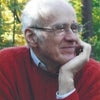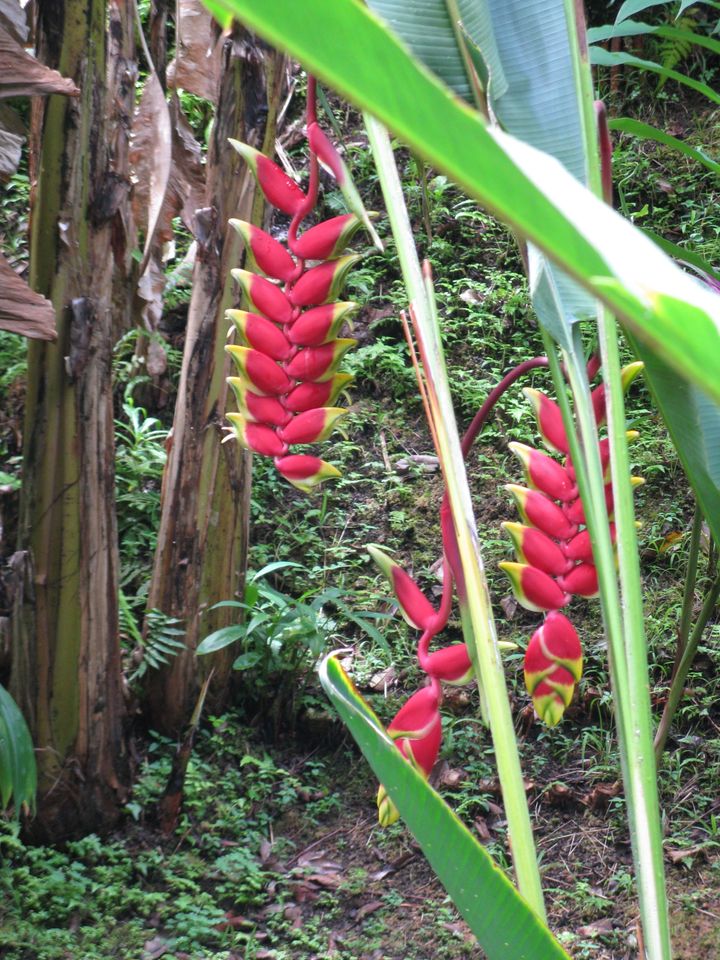
HAWAII TROPICAL BOTANICAL GARDEN
When you fly to the Big Island of Hawaii and get in the landing pattern for Kona airport, the place looks like an asphalt parking lot, a disappointment after all those hours above the Pacific. Why? The whole island is made of cooled lava, some of it recent, from a still-active volcano. The older parts and the wetter parts are overgrown with lush green, but not the area near the airport. It lies on the dry western coast, the site of the famous sunsets behind palms, facing nothing very big until the coast of Asia. Tourists spell out their names in bits of white coral on the gray of the lava: Bob & Jane were here, and their Japanese counterparts.
My favorite place on the island? Along with a volcanic crater (which, before you could hike across it, shot molten lava high above the island), the vertiginous rim overlooking the almost-2000-foot-deep Waipio Valley, Kealakekua Bay (where Captain Cook landed), the nearby City of Refuge (if an offender could get there, he or she was forgiven) my favorite place on the island is the Hawaii Tropical Botanical Garden. This attraction was created by the former owner of a trucking firm in San Francisco who transformed an ocean-side valley from jungle into a garden of trees, blossoms, a waterfall.
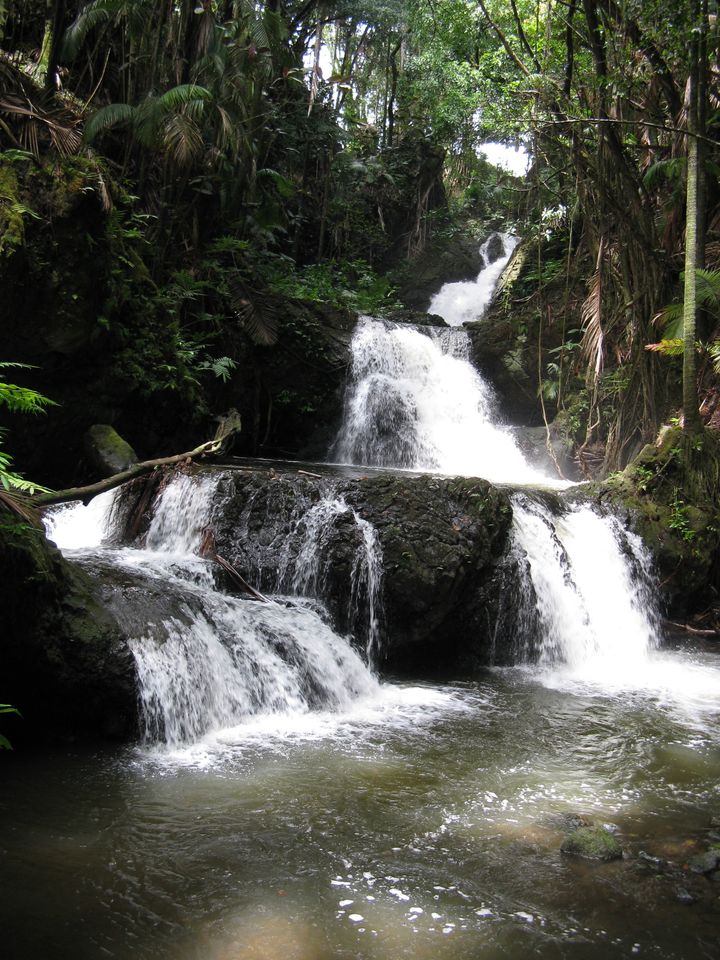
TROPICAL WATERFALL
Confession: I’m a sucker for botanical sites, whether Kew Gardens (which I visited in London), the university botanical garden near the football stadium in Berkeley, California, the Katsura Imperial Villa in Japan, or the Japanese Garden in Portland in my own state.
The garden on the island of Hawaii is special for several reasons. It adjoins the sea (the only one I know that faces the ocean). It specializes in outdoor tropical plants. It has a tumbling stream. When I featured the garden in an episode of my weekly TV show, we played hula music by island musician John Keawe. In the lyrics, he likens a certain woman to a “yellow ginger tree,” which sounds good but is otherwise meaningless to an outsider until you visit the garden.
Speaking of women, I confess that I honeymooned on the Big Island, at a place called Kona Village. Since then the beach-front cabins were wiped out by the same tsunami that wrecked the nuclear power plant at Fukushima.
Probably the most awe-inspiring place on the island is the Volcanoes National Park. The director had been in the Park Service at Yellowstone where he sought to locate the crater there. Finally, with the help of satellite photos, he realized the crater is huge; they had been looking for something much smaller. What Hawaii has is not sheer size, but current activity and a former volcano, now cooled, across the crater of which you can walk. But the big thrill is driving to the sea after dark and watching a river of molten rock flow down the cone and into the ocean.
I have mentioned Kealakekua Bay, where we once stayed with friends in something called “the pole house.” The lanai or porch looked across the bay to the spot, marked by a white monument, where Captain Cook stepped ashore, the first European to discover a land discovered long before and then inhabited by Polynesians.
After making the mistake of seeing the Europeans as gods, the local inhabitants came to regard them as invaders, a prelude to the U.S. coup that threw out the Hawaiian royalty and made the islands into a colony, and later a state. It is often forgotten that the original 13 states expanded their rule into land occupied by “Indians,” owned by Mexico, colonized by Russia or Spain, or ruled by Polynesians. For us this destiny was manifest.
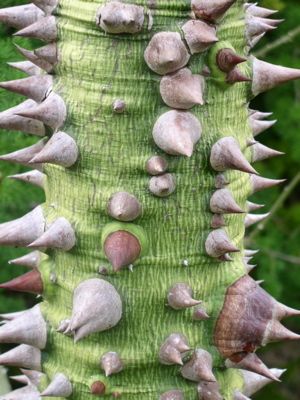
FLOSS SILK TREE
My favorite hike on the Big Island starts at the end of a residential street near Waimea, over a locked gate with signs warning of dire consequences (ignored by local residents whom we asked), along an artificial irrigation ditch, past an extensive bamboo forest, across a stream, and suddenly out into the open on the precipitous edge of the rim of the Waipio Valley.
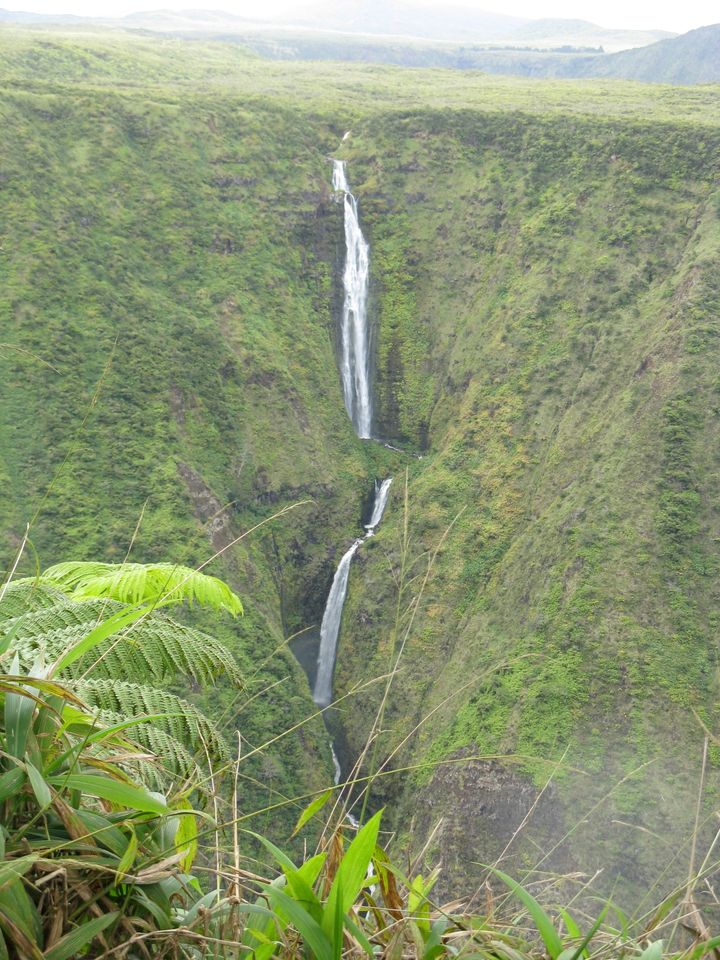
WAIPIO VALLEY WATERFALL
The Big Island is not only a magnet for individual tourists, but also a conference center. My wife, a painter, was invited to address a meeting of the American Association for the Advancement of Science. She talked about images inspired by cell biology. The meeting was held at an out-of-session prep school. Other meetings occur at hotels along the “sunshine coast” in the North-west or amid yoga retreats in the South-east.
Without food imported from California, without oil that runs electricity generators, without a flow of tourists coming by air or on cruise boats, all of which contributes to global warming, the Big Island would quickly become less of a “paradise.” But the carbon dioxide is invisible, and meanwhile the island is lovely.
